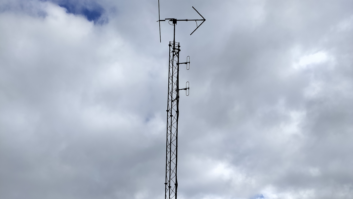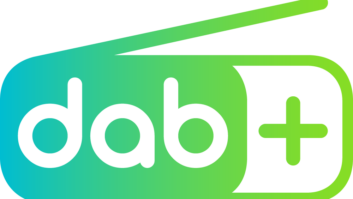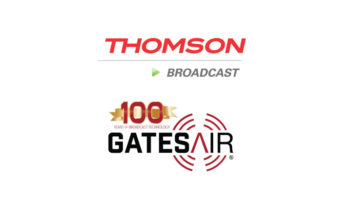Canadian IBOC‘Could Be Considered For Licensing.’
OTTOWA In a public notice on digital radio released in December (CRTC 2006-160), the Canadian Radio-television and Telecommunications Commission states that “in order to enhance the prospects of digital radio broadcasting offered in L-band, licensees will be free to develop whatever broadcast services they believe will be of greatest interest to the listening public.”
In the document, the CRTC states it is a station’s responsibility to decide whether it wants to use IBOC, given technical limitations. Specifically, in section 53, the CRTC states:
“Because of … technical limitations, there are three key service elements to consider if a station implements IBOC in a particular market. First, digital IBOC signals will add a certain amount of noise to a station’s analog signal, marginally reducing its effective service area. Second, the service area of both the main digital signal and whatever multicast signals are broadcast will be somewhat less than the service area of the corresponding analog signal. Third, IBOC signals can degrade the service areas of technically related stations located in the same or adjacent markets. The amount of the degradation will depend on a number of factors, including the frequency relationships, the relative location of the service areas and whether or not the second station has also adopted IBOC.”
The CRTC stated that if the technical issues can be addressed, “particularly any potential interference to other stations,” IBOC “could be considered for licensing.”
The commission further stated that if the Department of Industry authorizes IBOC technology for the AM and/or FM bands under the Radiocommunication Act, the commission would be prepared to authorize IBOC and it would adopt an expedited process for stations that propose to transmit a digital simulcast of their analog service.
The commission plans to meet with the executives of the major radio groups within six months to discuss the industry’s proposed plan and implementation schedules.
Read the notice at www.crtc.gc.ca/archive/ENG/Notices/2006/pb2006-160.htm .
– Leslie Stimson
To date, Canadian broadcasters have rolled out Eureka-147 DAB L-band Digital Radio Broadcasting services in six cities: Ottawa, Toronto, Vancouver, Victoria, Montreal and Windsor. More than 50 AM and FM stations are currently broadcasting 100 percent simulcasts of their analog programming.
This was accomplished under a transitional DRB policy set in 1995 by our regulator, the Canadian Radio-television and Telecommunications Commission. The CRTC foresaw DRB as being an eventual replacement for analog AM/FM services.
The CRTC said that until a permanent policy is established, DRB stations would primarily be licensed only to existing AM/FM licensees and the DRB facilities would mostly simulcast the programming of existing analog stations. This has not proven attractive to the public and has not encouraged consumer receiver dealers to stock and sell L-band DRB receivers in large quantities.
The CRTC has had a permanent DRB policy for Canada under consideration. [The new policy was released in December, see sidebar, page XXX.]
When it became known that this was underway, broadcasters put the implementation of any new DRB facilities on hold until the new policy was in place.
Multimedia DMB, too
When the CRTC held public hearings earlier in May 2006, it received many recommendations. See “Review of the Commercial Radio Policy” (web link).
A key recommendation was that the CRTC should allow DRB stations to originate entirely new programming services that would be attractive to listeners. Moreover, broadcasters expressed interest in providing new types of multimedia DMB services via L-Band DAB transmitters and recommended that this technology also be considered when setting the new licensing policy.
Contrary to some recent reports, broadcasters in Canada are not suggesting that L-band DRB services be dropped from our long-term strategic plans. However, they would like the regulatory freedom to re-purpose this service, to move away from the “replacement” model of the current transitional policy and to provide exciting new services that Canadians want to receive.
After this, broadcasters will determine their future strategies for the permanent use of allocated L-band spectrum.
As for the so-called In-Band, On-Channel DRB option, Canadian radio broadcasters see this as a possible opportunity to transition their current analog services in the AM and FM bands to digital. During the CRTC hearings, broadcasters recommended the following with respect to IBOC services:
- The CRTC should allow the implementation by existing broadcasters of AM and FM IBOC DRB services that are 100 percent simulcast with their respective analog services (HD1) and that broadcasters should be permitted to determine when such implementation should occur.
- With respect to ancillary FM IBOC DRB services (HD2, HD3, etc.) the regulators should adopt provisions similar to the current policy governing audio programming services delivered via FM subcarriers. That is, the CRTC should allow this capacity to be used by the licensee or its lessees, subject to certain specific provisions applicable only to services that compete with existing programming sources in the same market (such as ethnic radio services).
It is important to understand that the broadcasters are recommending that these IBOC policy steps be taken only if the following happens:
- The FCC officially adopts one or more IBOC systems as voluntary standards in the United States.
- Canada’s technical evaluations of IBOC technology demonstrate that the compromises necessary to implement this technology are acceptable to the regulators and the broadcasters.
- Industry Canada (our technical regulator) adopts transmission standards in Canada that are similar to the U.S. standards.
FM-band IBOC tests are currently underway in Toronto, with a view to assessing the second point above. A slide presentation on preliminary technical results, presented by Francois Gauthier of the CBC during the Central Canada Broadcast Engineers convention in September, is available at http://www.ccbe.ca/Papers2006.html.
AM-band IBOC tests are planned for the spring. Although the FM-band tests involve only the Ibiquity Digital HD Radio system, broadcasters anticipate that AM-band testing will include both the Ibiquity HD Radio and the Digital Radio Mondiale systems.
Freedom to choose
In summary, Canadian broadcasters would like the freedom to use L-band DRB and AM/FM IBOC technologies as they transition their analog services into the digital world. They believe that this policy would provide the best opportunity for them to be able to compete with the array of new digital audio services available to consumers, such as satellite radio, Internet radio, iPods, etc. It also provides a multi-option plan that permits them to proceed with digital radio conversions, even if one of the technology options fails to gain adequate consumer acceptance.
This article is adapted from a post to Radio-L, a list serve dedicated to international digital radio issues. It is reprinted with the author’s permission.
Wayne A. Stacey, P.E., is a broadcast consulting engineer who heads up Wayne A. Stacey and Associates in Ottawa, Ontario. Reach him at [email protected].
Radio World welcomes other points of view.












